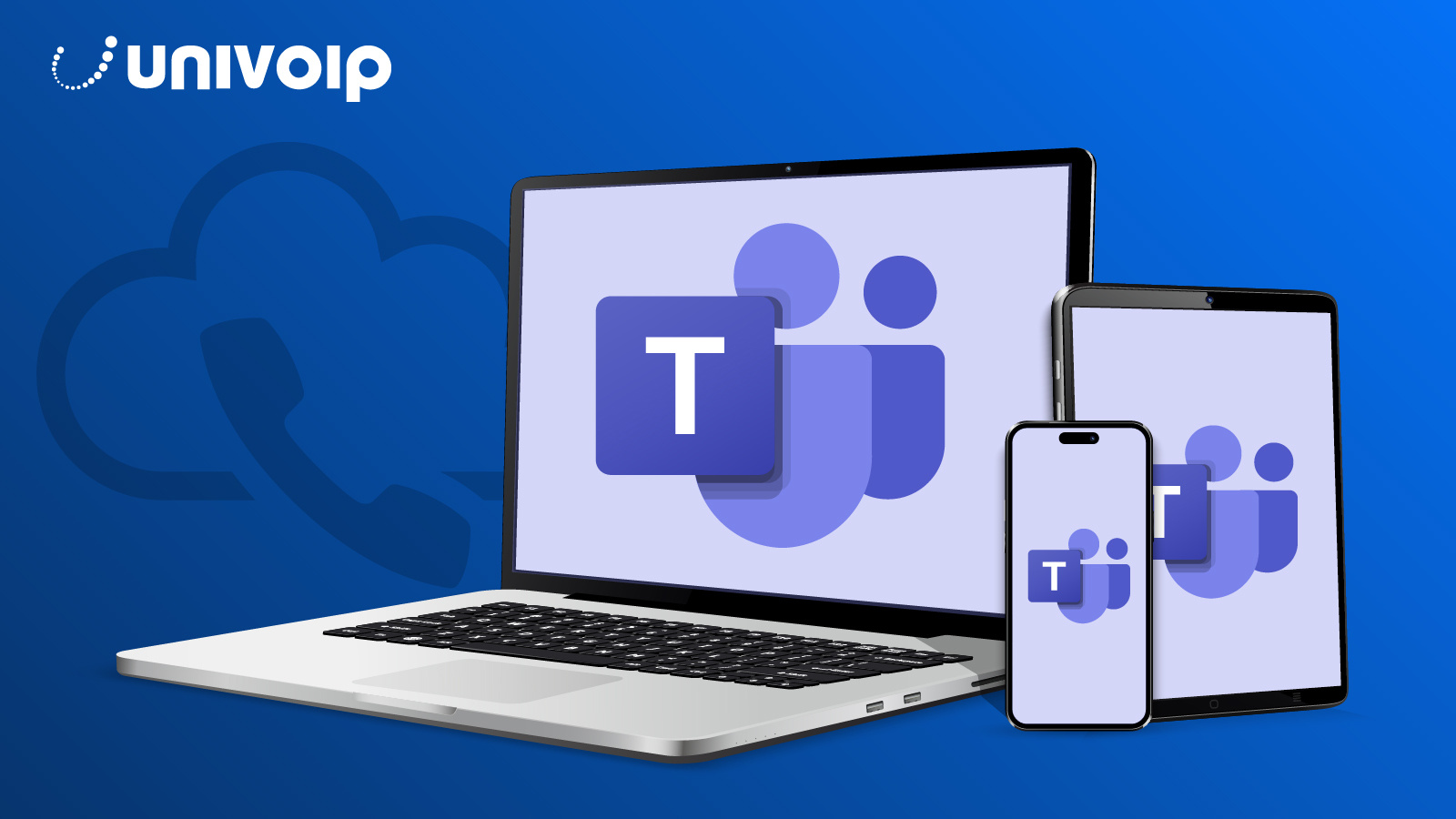The telecommunications industry is rapidly evolving to meet modern business demands, becoming the backbone of how organizations connect and operate. Traditional phone systems are now outdated, replaced by scalable, digital communication infrastructures that enable smarter, more efficient collaboration. Today’s businesses must embrace this shift to stay competitive and thrive. In this article, we’ll explain the difference between SIP and VoIP, two key technologies driving this transformation.
Is SIP and VoIP the same?
No, SIP and VoIP are not the same, but they work together. VoIP (Voice over Internet Protocol) is a broad term for making voice calls over the internet, while SIP (Session Initiation Protocol) is one of the protocols used to enable those calls. SIP handles call setup, management, and termination for VoIP and other media types like video and messaging. In short, SIP is a signaling protocol, and VoIP is the overall technology.

What Is SIP?
SIP (Session Initiation Protocol) is a signaling protocol used to establish, manage, and end real-time communication sessions over the internet. These sessions can include voice calls, video calls, messaging, and more. SIP doesn’t carry the media itself, it handles the setup and teardown of the connection, making it a key enabler for VoIP and other IP-based communication services.
How Does SIP Work?
SIP works by sending messages between devices to establish and manage communication sessions. When a call is made, SIP sends an invite to start the session, coordinates the call setup, handles any changes like adding video, and closes the session when the call ends. It works alongside other protocols such as RTP, which carry the actual voice or video data.
SIP Benefits
1. Unified Communication
SIP supports more than just voice. It enables video calls, instant messaging, file sharing, and conferencing, all over a single connection.
2. Cost Efficiency
By routing voice and data over the same IP network, SIP reduces the need for separate phone lines and helps cut down on monthly telecom expenses.
3. Scalability Made Simple
Whether you're adding new employees or opening new locations, SIP makes it easy to scale without the hassle of physical installations or new circuits.
4. Supports Remote Work
SIP lets users connect from any internet-enabled device, making it ideal for businesses with distributed or hybrid teams.
5. Vendor Flexibility
As an open standard, SIP is compatible with a wide range of hardware and software. This allows you to avoid vendor lock-in and build the setup that works best for your needs.
6. Centralized Management
SIP trunks allow for centralized control of multiple communication channels, simplifying system administration and making maintenance more efficient.
What Is VoIP?
VoIP stands for Voice over Internet Protocol. It is a technology that allows you to make phone calls using an internet connection instead of a traditional phone line. VoIP converts your voice into digital signals and sends them over the internet, making communication more flexible, scalable, and often more cost-effective than legacy phone systems.
How Does VoIP Work?
VoIP works by converting your voice into digital data, transmitting it over the internet, and then converting it back into audio on the receiving end. When you make a call, your voice is broken into small data packets. These packets travel through the internet and are reassembled in real time, allowing for smooth, two-way communication. This process enables calls from computers, VoIP phones, or mobile apps.
Benefits of VoIP
1. Lower Communication Costs
VoIP uses your existing internet connection, which reduces the need for separate phone lines and lowers local and international calling expenses.
2. Remote Work and Mobility
Employees can make and receive calls from anywhere using VoIP apps on smartphones, laptops, or desktop devices. Perfect for remote or hybrid teams.
3. Easy Scalability
Adding new users, departments, or locations is simple and doesn't require new physical infrastructure. VoIP grows with your business.
4. Advanced Features Included
VoIP systems typically offer built-in features such as voicemail to email, call routing, video conferencing, auto attendants, and call recording. All without extra hardware.
5. Integration with Business Tools
VoIP platforms often integrate with CRM systems, help desks, and other business applications to streamline operations and improve customer interactions.
6. High Call Quality
With a stable internet connection and modern VoIP codecs, call quality is clear, consistent, and often better than traditional landlines.
What Is the Purpose of SIP in VoIP?
SIP acts as the signaling protocol that makes VoIP communication possible. Its main role is to establish, manage, and end voice and video calls over the internet. While VoIP handles the actual transmission of voice data, SIP takes care of the setup, deciding who is calling whom, where to send the call, and how to close the connection when it ends. It also supports additional features like call transfers, conferencing, and instant messaging. Without SIP or a similar protocol, VoIP systems wouldn't know how to initiate or control calls effectively.
What Is SIP Trunk in VoIP?
A SIP trunk is a digital connection that uses the SIP protocol to link your business phone system to the internet, replacing traditional analog phone lines. It allows you to make and receive calls using VoIP while supporting other communication types like video and messaging. Unlike physical phone lines, SIP trunks are virtual, which means they’re easier to manage, more flexible, and highly scalable. Businesses can add or remove call capacity as needed without hardware changes. SIP trunking also helps reduce costs by combining voice and data traffic over a single network and simplifying communication infrastructure.
Difference Between SIP and VoIP
1. Definition
VoIP (Voice over Internet Protocol) is a broad term that refers to any technology that enables voice communication over the internet. SIP (Session Initiation Protocol) is a specific protocol used to start, manage, and end those communications. In short, VoIP is the service, and SIP is one of the ways to deliver it.
2. Functionality
VoIP focuses on transmitting voice data. SIP, on the other hand, is responsible for setting up and controlling communication sessions. It supports not just voice, but also video calls, messaging, and other real-time communications.
3. Scope
VoIP includes various protocols such as SIP, H.323, and others. SIP is just one protocol under the VoIP umbrella, but it is the most commonly used due to its flexibility and reliability.
4. Flexibility
SIP is more flexible than traditional VoIP setups. It allows for more than just voice, supports multimedia sessions, and is compatible with many different platforms and devices.
5. Use Cases
If you only need internet-based voice calling, basic VoIP is often enough. If you require more advanced features like video conferencing, instant messaging, or unified communications, SIP-based systems are a better fit.
6. Integration
SIP easily integrates with unified communication systems and business applications, while basic VoIP may have more limited integration options depending on the provider and setup.
SIP vs VoIP: Which Is Best for Your Business?
Modern cloud VoIP systems often come equipped with SIP functionality, combining the flexibility of internet-based calling with advanced communication features like video, messaging, and file sharing. This means you're no longer limited to just voice calls. You can run your entire business communication system through a single platform.
If your organization is still relying on outdated phone lines, making the switch to cloud VoIP with SIP can improve efficiency, reduce costs, and support your team wherever they work. It's a scalable, future-ready solution designed for growing businesses.
Want to see how it works? Book a personalized demo and discover how SIP and VoIP can elevate your business communication.

/univoip-feat-whatisUCAAS.jpg)

